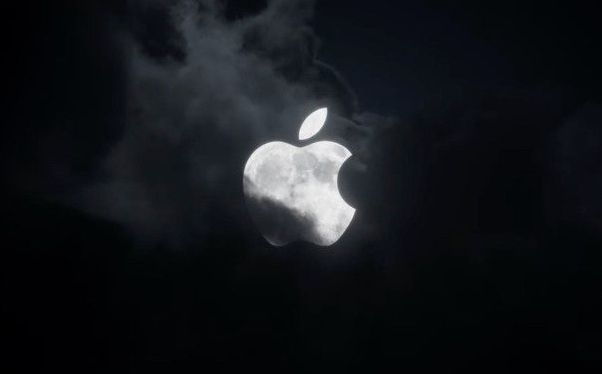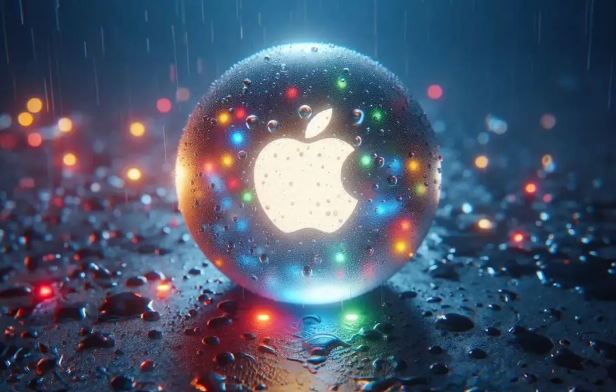 Computer Tutorials
Computer Tutorials
 System Installation
System Installation
 macOS could not be installed because the path /System/Installation/Packages/OSInstall.mpkg appears to be missing or damaged
macOS could not be installed because the path /System/Installation/Packages/OSInstall.mpkg appears to be missing or damaged
macOS could not be installed because the path /System/Installation/Packages/OSInstall.mpkg appears to be missing or damaged
Jul 06, 2025 am 01:04 AMWhen encountering the prompt "macOS could not be installed because the path /System/Installation/Packages/OSInstall.mpkg appears to be missing or damaged" it means that the system installation package is missing or damaged during installation or upgrading macOS, which is common in old version recovery images, third-party boot disks or disk structure exceptions; solutions include: 1. Confirm whether the boot media is complete, it is recommended to use the official createinstallmedia command to create a boot disk and check whether OSInstall.mpkg exists; 2. Select "Reinstall macOS" from recovery mode to automatically download the necessary files; 3. Check the disk format and partition structure, ensure that you use "Mac OS Extensions (Login)" and GUID partition table, and verify the disk logic errors; 4. Use the Internet Recovery (Option Command R) Loads the recovery environment and installer from the Apple server.

I encountered the prompt "macOS could not be installed because the path /System/Installation/Packages/OSInstall.mpkg appears to be missing or damaged" indicating that you encountered the problem of missing or damaged system installation packages when trying to install or upgrade macOS. This problem usually occurs when using old versions of recovery images, third-party boot disks, or disk structure abnormalities.

Here are some common troubleshooting and solutions that can help you deal with this situation:

1. Confirm whether the startup media is complete
If you are installing macOS via USB or other external devices, first make sure your boot disk is properly made. Many third-party tools (such as BalenaEtcher or some homemade startup disk scripts) may not copy all key files correctly, resulting in the missing OSInstall.mpkg .
suggestion:

- Use the officially recommended method to create a startup disk, such as the
createinstallmediacommand provided by Apple. - Check whether the
OSInstall.mpkgfile exists in the/Packagesfolder in the startup disk. - If you are not sure, you can remake the boot disk once to make sure that you are choosing a complete and uncorrupted macOS installer image.
2. Try to reinstall from macOS recovery mode
If your current Mac can enter recovery mode (hold Command R when restarting), try using the built-in "Reinstall macOS" feature instead of running the installer manually.
Operation steps:
- After entering recovery mode, select the "Reinstall macOS" option.
- The system will automatically connect to Apple's server to download the necessary installation files, including
OSInstall.mpkg. - This method bypasses the integrity of the local boot disk and is suitable for better network environments.
Note: This method requires a stable internet connection as it may download hundreds of MB to several GB of data.
3. Check the disk format and partition structure
Sometimes, wrong disk format can also lead to installation failure. Especially when you try to install macOS on non-Apple format disks, or use incompatible partition tables (such as GPT and MBR mixed use), it may also lead to problems with path finding.
suggestion:
- Use Disk Utility to format the target disk to "Mac OS Extensions (Logistics)" and use the GUID partition table.
- If you are a dual system user, make sure that the macOS partition has not been rewritten by other operating systems.
- Run Disk Utility > First Assistance > Verify Disk in recovery mode to check for logical errors.
4. Network installation (Internet Recovery) as an alternative
If you suspect there are problems with the local recovery partition or boot disk, you can try Internet Recovery. This will directly load the recovery environment and installer from Apple's server.
How to operate:
- Restart the Mac and hold Option Command R at startup.
- Wait for a few minutes until the language selection interface appears.
- After entering, select "Reinstall macOS".
This method depends on network downloads, and the speed depends on the Apple CDN nodes in your region. It is sometimes slower, but has high reliability.
Basically these are the methods. You can check whether the boot disk is complete according to your own situation, and then try recovery mode or network installation. Most of this type of problem is caused by incomplete installation source. As long as the path is correct and the file exists, it can generally be solved smoothly.
The above is the detailed content of macOS could not be installed because the path /System/Installation/Packages/OSInstall.mpkg appears to be missing or damaged. For more information, please follow other related articles on the PHP Chinese website!

Hot AI Tools

Undress AI Tool
Undress images for free

Undresser.AI Undress
AI-powered app for creating realistic nude photos

AI Clothes Remover
Online AI tool for removing clothes from photos.

Clothoff.io
AI clothes remover

Video Face Swap
Swap faces in any video effortlessly with our completely free AI face swap tool!

Hot Article

Hot Tools

Notepad++7.3.1
Easy-to-use and free code editor

SublimeText3 Chinese version
Chinese version, very easy to use

Zend Studio 13.0.1
Powerful PHP integrated development environment

Dreamweaver CS6
Visual web development tools

SublimeText3 Mac version
God-level code editing software (SublimeText3)

Hot Topics
 Detailed explanation of the installation steps of MySQL on macOS system
Apr 29, 2025 pm 03:36 PM
Detailed explanation of the installation steps of MySQL on macOS system
Apr 29, 2025 pm 03:36 PM
Installing MySQL on macOS can be achieved through the following steps: 1. Install Homebrew, using the command /bin/bash-c"$(curl-fsSLhttps://raw.githubusercontent.com/Homebrew/install/HEAD/install.sh)". 2. Update Homebrew and use brewupdate. 3. Install MySQL and use brewinstallmysql. 4. Start MySQL service and use brewservicesstartmysql. After installation, you can use mysql-u
 How to install AdobeReader on macOS
May 16, 2025 pm 08:33 PM
How to install AdobeReader on macOS
May 16, 2025 pm 08:33 PM
AdobeReader no longer supports macOS, and AdobeAcrobatReaderDC is required. 1) Visit Adobe's official website and download a version suitable for macOS. 2) Open the .dmg file, drag the icon to the "Applications" folder, enter the administrator password and complete the installation. 3) Start Adobe AcrobatReaderDC from the "Applications" folder.
 Fixing the 'Untrusted_Cert_Title' error during macOS installation
Jul 07, 2025 am 01:06 AM
Fixing the 'Untrusted_Cert_Title' error during macOS installation
Jul 07, 2025 am 01:06 AM
To resolve the "Untrusted_Cert_Title" error, you must first make sure to use the official certified installer and create it correctly. Secondly, check whether the system time settings are accurate, then update the firmware and bootstrap, and finally try to install macOS through the network recovery. The specific steps are: 1. Use the official AppStore installer and create a USB installer through Apple tools such as createinstallmedia to avoid manually copying files or using third-party tools; 2. After entering recovery mode, correct the date and time through terminal commands; 3. Check and update the EFI or firmware of the Mac to confirm that the hardware supports the target macOS version; 4. Long press Option Command R to start the network
 How to install macOS on a blank hard drive?
Jul 07, 2025 am 12:32 AM
How to install macOS on a blank hard drive?
Jul 07, 2025 am 12:32 AM
Installing macOS from scratch is not complicated, just prepare the tools and follow the steps. First, prepare a working Mac, at least 16GB USB drive, a stable network connection and sufficient time; secondly, it is recommended to use the createinstallmedia command in Terminal to create a bootable installer; then enter the installation interface through RecoveryMode or USB installer; then use DiskUtility to format the target hard disk as APFS or MacOSExtended; finally follow the prompts to complete the installation process.
 macOS could not be installed because the path /System/Installation/Packages/OSInstall.mpkg appears to be missing or damaged
Jul 06, 2025 am 01:04 AM
macOS could not be installed because the path /System/Installation/Packages/OSInstall.mpkg appears to be missing or damaged
Jul 06, 2025 am 01:04 AM
When encountering the prompt "macOS could not be installed because of the path/System/Installation/Packages/OSInstall.mpkgappearstobemissingordamaged", it means that the system installation package is missing or damaged during installation or upgrading macOS, which is common in old version recovery images, third-party boot disks or disk structure abnormalities; solutions include: 1. Confirm whether the boot media is complete, it is recommended to use the official createinstallmedia command to create a boot disk and check whether OSInstall.mpkg exists; 2. Select " from recovery mode"
 How to install macOS without an Apple ID?
Jul 14, 2025 am 01:19 AM
How to install macOS without an Apple ID?
Jul 14, 2025 am 01:19 AM
You can install macOS without using AppleID, but some functions are limited. There is no need to force login to AppleID during the installation process. You can create a local account to use the basic functions of the system. However, functions such as iCloud synchronization, AppStore download, and search for my Mac require AppleID to enable it. 1. When installing, you can use the USB drive to boot disk or recovery mode to create a local account; 2. Local account can browse web pages, edit documents, program development, and play media, but it is impossible to use iCloud and download most AppStore applications; 3. Skip AppleID to log in for the first time to create a local account; 4. Suitable for computer room equipment, development and testing, and privacy-sensitive users, and it is recommended to bind Apple to long-term use.
 How long does a macOS installation take?
Jul 03, 2025 am 01:06 AM
How long does a macOS installation take?
Jul 03, 2025 am 01:06 AM
AcleanmacOSinstallationtypicallytakes30minutestoanhour,butseveralfactorscanextendtheprocess.1)InternetRecoverymayadd15minutestooveranhourforOSdownload,dependingoninternetspeed.2)Installationtimevariesbetween20–40minutesafterdownloadcompletion.3)Stora
 OpenCore Legacy Patcher for macOS installation guide
Jul 19, 2025 am 01:26 AM
OpenCore Legacy Patcher for macOS installation guide
Jul 19, 2025 am 01:26 AM
If the device is not in Apple's official support list, you can install macOS on old Macs through OpenCoreLegacyPatcher (OCLP). The specific steps are as follows: 1. Confirm the device compatibility, such as MacBookPro, iMac or Macmini around 2012, and check whether the motherboard chipset supports EFI mode; 2. Prepare a 16GB or larger USB drive and make a macOS installation USB drive, write to the image using official commands or third-party tools; 3. Download and run OCLP, select the target device for patch processing, automatically solve the kernel expansion and driver compatibility issues, and manually adjust the patch options if necessary; 4. Insert the patched USB drive, press the Option key when restarting





